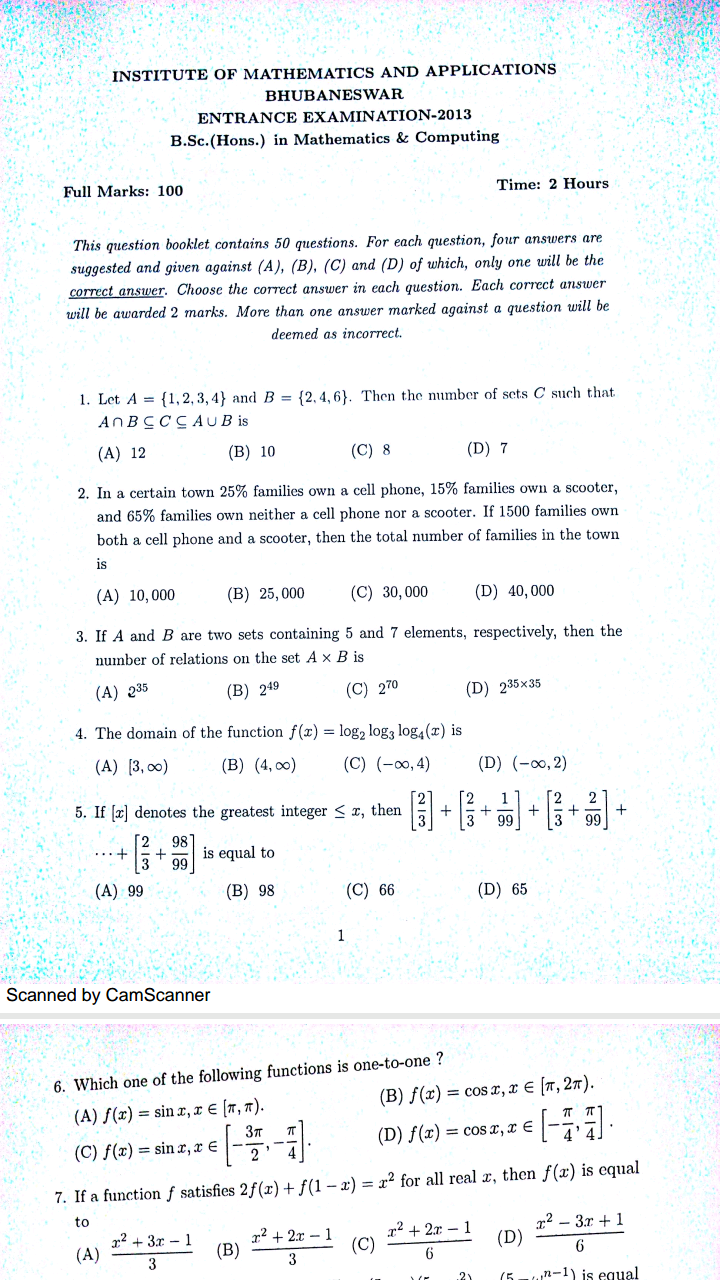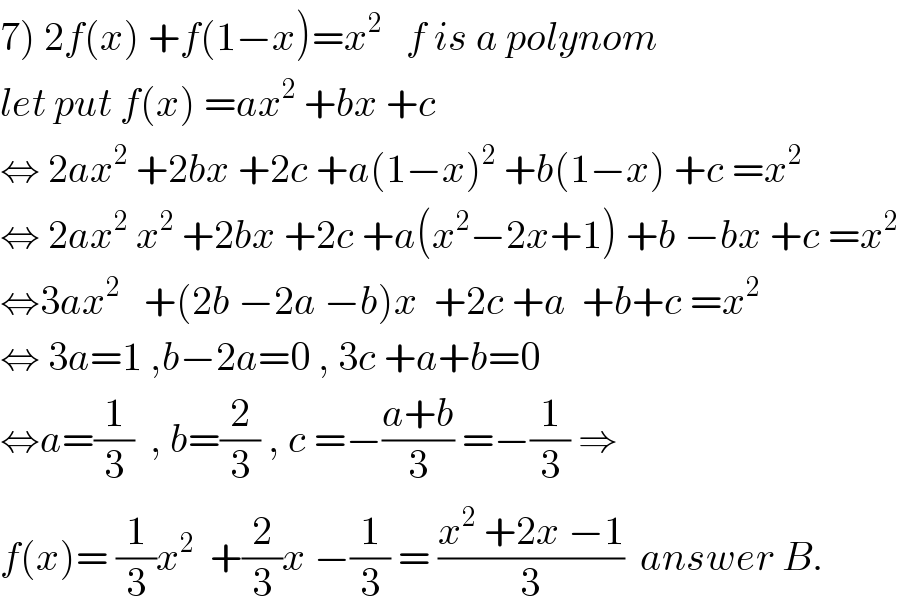
Question and Answers Forum
Question Number 34739 by chakraborty ankit last updated on 10/May/18

Commented by abdo mathsup 649 cc last updated on 10/May/18
![5) we have the formula Σ_(k=0) ^(n−1) [x +(k/n)] =[nx] ⇒ Σ_(k=0) ^(98) [ (2/3) +(k/(99))]=[99.(2/3)]=[66]=66 answer c.](Q34767.png)
Commented by math khazana by abdo last updated on 11/May/18

Commented by chakraborty ankit last updated on 13/May/18

Answered by Rasheed.Sindhi last updated on 13/May/18
![1. A={1,2,3,4},B={2,4,6} A∩B ⊇ C ⊆ A∪B A∩B={2,4} , A∪B={1,2,3,4,6} C={2,4}∪X , ∀ X∈P( (A∪B)−(A∩B) ) P({1,2,3,4,6}−{2,4}) =P({1,3,6} Number of X′s =2^3 =8 Number of C′s=8 [∵ C={2,4}∪X] (C) 8](Q34804.png)
Answered by rahul 19 last updated on 12/May/18

Answered by Rasheed.Sindhi last updated on 13/May/18
![2. Let the number of families in the town is y. 25% of y=y/4 having cell phone. 15% of y=3y/20 having scooter. 1500 families having both. −−−− (y/4) −1500 having cell phones only. (3y/20) −1500 having scooters only. Families having a cell phone or a scooter: [(y/4) −1500]+1500+[(3y/20) −1500] (y/4)+((3y)/(20))−1500=((5y+3y−30000)/(20)) Having neither cell phone nor scooter y−((8y−30000)/(20))=65% of y ((20y−8y+30000)/(20))=((13y)/(20)) 13y−12y=30000 y=30000 Total number of families in the town (C) 30,000](Q34926.png)
Commented by chakraborty ankit last updated on 13/May/18

